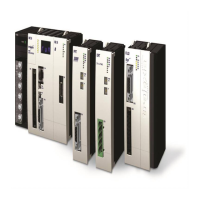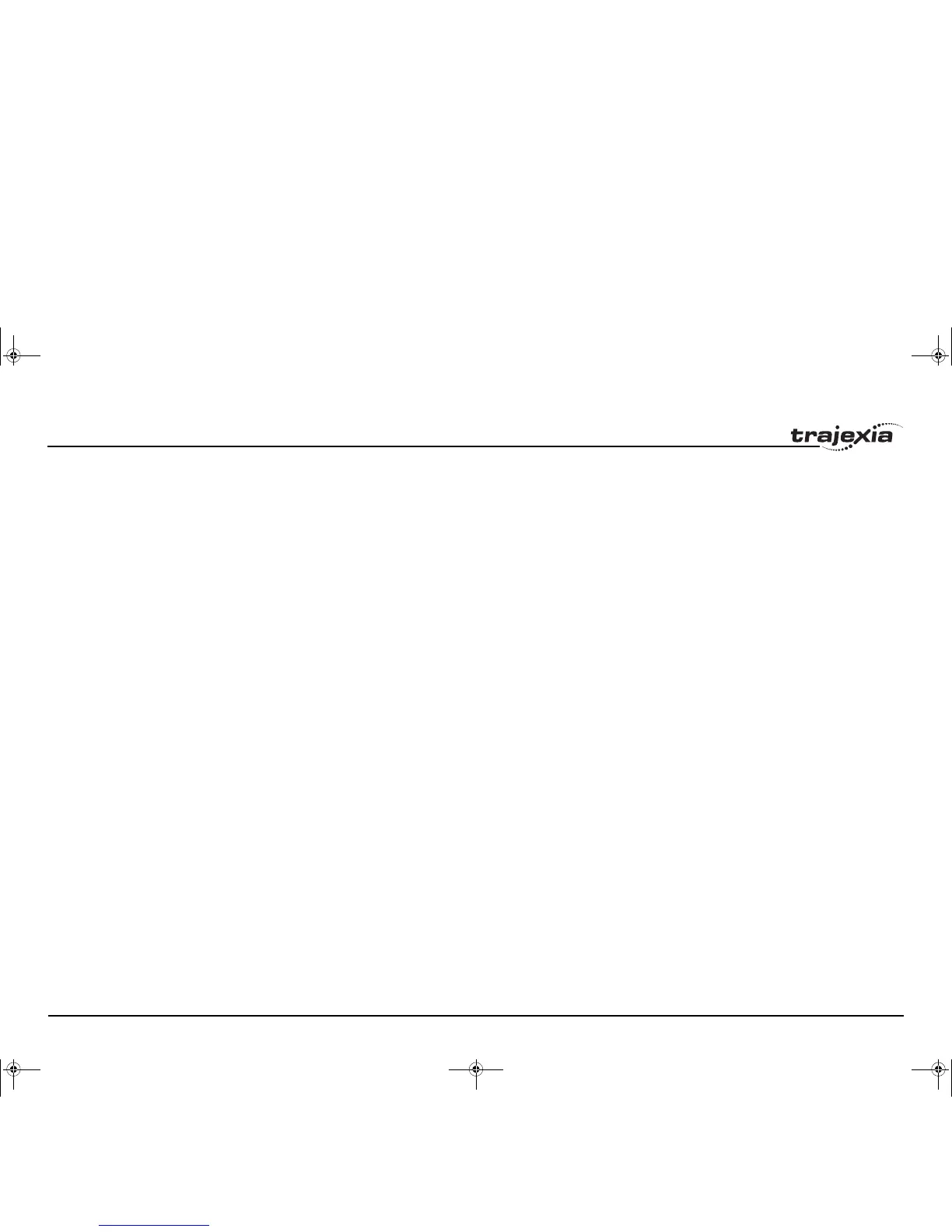Examples and tips
PROGRAMMING MANUAL 251
Revision 3.0
The calculation of the multiturn limit setting parameter Pn205 is not needed
in this case because the ball screw is a system with a fixed (limited) axis. It is
enough to set this value large enough to have the overflow of the counter out
of the effective position. Also, because of the axis is finite, it is not important
to set the REP_OPTION parameter, because REP_DIST must be set large
enough so it is outside of the maximum effective position (540 mm). One
solution is: REP_DIST = 1000 and REP_OPTION = 0.
With these setting, executing MOVE(17) moves the ball screw 17 mm in
forward direction.
6.1.4 Mapping Servo Driver inputs and outputs
The Trajexia controller has got a digital I/O space that consists of 256 digital
inputs and 256 digital outputs.
The digital outputs range has four parts:
• Digital outputs 0 - 7.
These outputs do not physically exist on the TJ1-MC__. If you write
these outputs, nothing happens. If you read these outputs, they return 0.
• Digital outputs 8 - 15.
These outputs physically exist on the TJ1-MC__. You can physically
access them on the 28-pin screwless connector on the front side of the
TJ1-MC__ (see the Hardware Reference Manual for details). If you write
these outputs, they become active and give a 24 VDC signal. If you read
these outputs, they return their current status. Use the command OP to
write and read these outputs.
• Digital outputs 16 - 31.
These outputs are software outputs only. They do not physically exist on
the TJ1-MC__, but you can write them and read their correct status. You
use these outputs mostly in BASIC programs to accomplish some
control sequences that require outputs which do not need to be physical.
Use the command OP to write and read these outputs.
• Digital outputs 32 - 255.
These outputs are physically present only if additional digital I/O units
are connected to the TJ1-MC__ via MECHATROLINK-II bus. Writing and
reading them if they do not physically exist (when the I/O units are not
connected) has no effect. Use the command OP to write and read these
outputs.
All outputs are unique to the controller. They are not accessed per axis.
The digital input range has three parts:
• Digital inputs 0 - 15.
These inputs physically exist on the TJ1-MC__. You can physically
access them on the 28-pin screwless connector on the front side of the
TJ1-MC__ (see the Hardware Reference Manual for details). These
inputs are active (ON) when a 24 VDC signal is applied to them. When
you read them, they return their current status. Use the command IN to
read these inputs.
• Digital inputs 16 - 31.
These outputs are software inputs only. They do not physically exist on
the TJ1-MC__, but you can read them. You use them mostly in BASIC
programs to accomplish some control sequences that require inputs
which do not need to be physical. Use the command IN to read these
inputs.
• Digital inputs 32 - 255.
These inputs are physically present only if additional digital I/O units are
connected to the TJ1-MC__ via the MECHATROLINK-II bus. If you read
them if they do not physically exist (the I/O units are not connected), they
return 0. Use the command IN to read these inputs.
All inputs are unique to the controller. They are not accessed per axis.
MECHATROLINK-II Servo Drivers inputs in the Trajexia I/O space
With the BASIC command IN, you can access the physically present inputs
in a BASIC program. These inputs can be built in the controller or connected
via the MECHATROLINK-II bus.
Some inputs of the Servo Driver are mapped into the Trajexia I/O space.
Therefore, you can access these inputs from the BASIC program. Trajexia
only supports this for Servo Drivers connected to the Trajexia system via the
MECHATROLINK-II bus.
The selection of inputs of the Servo Driver that are mapped into the Trajexia
I/O space depends on the value of the parameter Pn81E. The
recommended value of Pn81E is 0x4321.
With this default value, the mapping is as follows for the Sigma-II Servo
Driver:
I52E-EN-03.book Seite 251 Freitag, 29. Juni 2007 11:55 11

